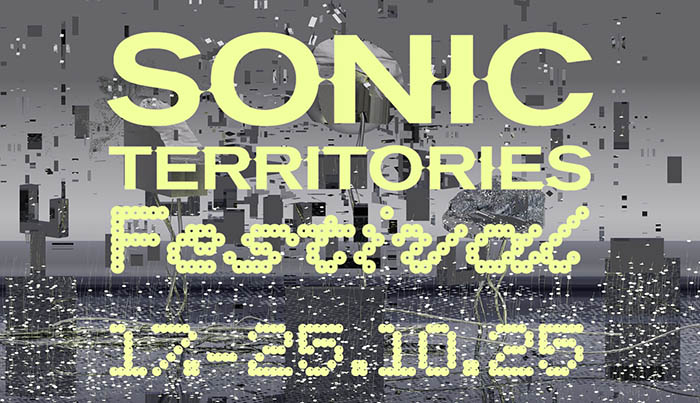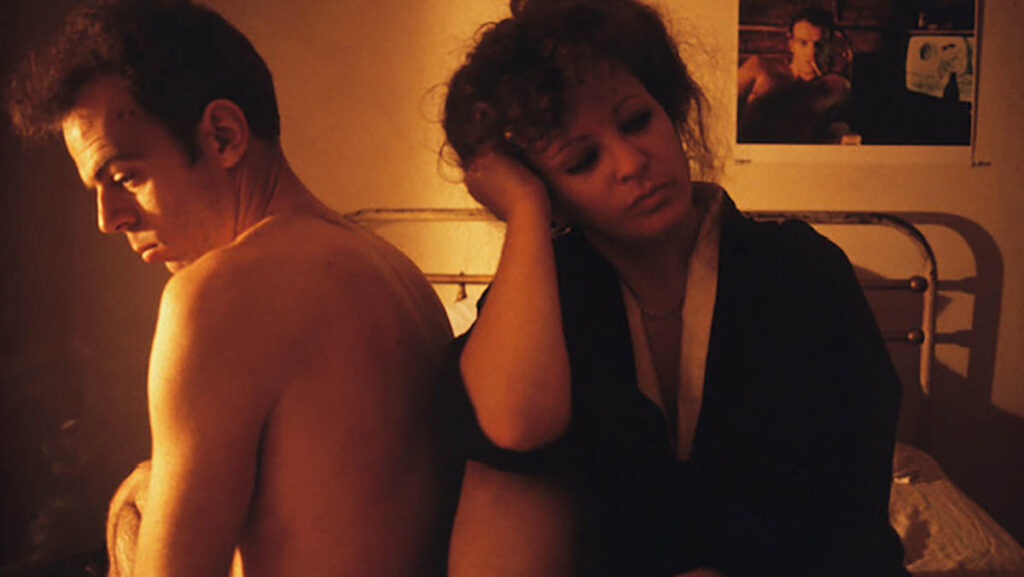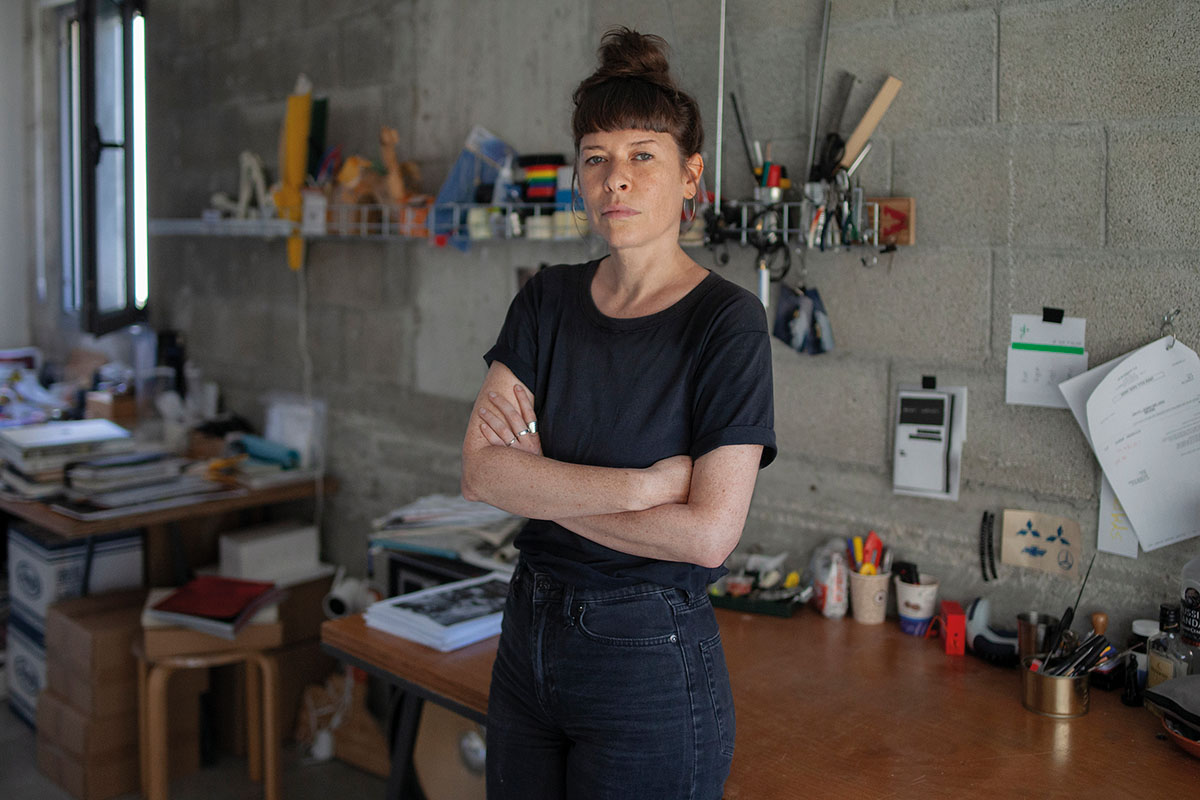
Where are you today, both physically and in terms of your artistic practice?
I’m in my studio in South Tel Aviv. I just opened an exhibition split between two spaces: one in an underground room inside my studio building and the other in a tiny gallery—maybe the smallest in the city—just a 10-minute walk away. Both are located along the same stretch of Herzl Street. In recent years, I’ve been working more with spaces—creating scenographies, or as I call them, “Zones.” These often stem from scenes I’ve photographed or places I’ve encountered and wanted to reconstruct. The process involves translating a captured space from a two-dimensional photograph back into a three-dimensional installation, abstracting it along the way. For instance, in my 2021 Pleasure Blinds installation at Artport’s parking lot, I based the work on a found photograph but stripped away all identifying markers of time and place. A big part of my process is about creating a feeling or physical experience rather than telling a clear story. Lately, I’ve been experimenting with making these spaces into a living thing—laying them out in a way that invites people to engage directly, like offering a ‚chair‘ to sit in rather than placing something on a pedestal.
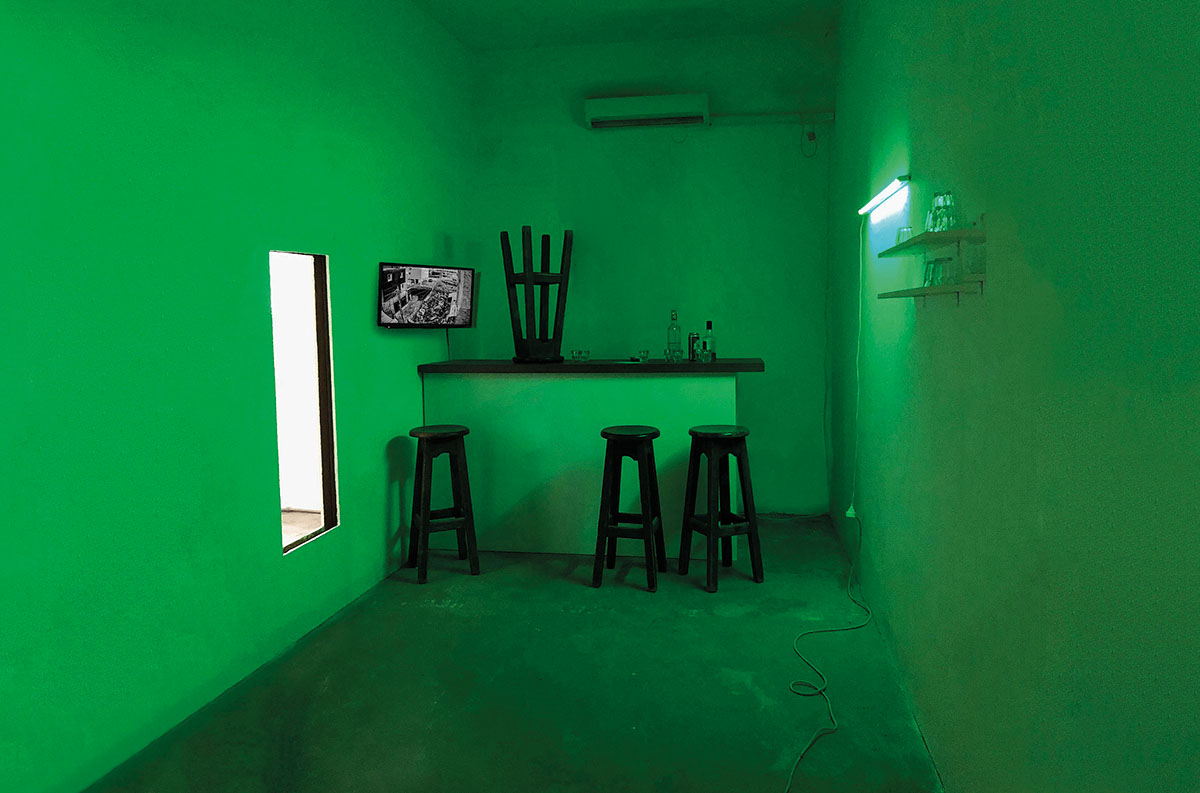
Vigilance seems to play a role in your work. Have you ever encountered a moment when the audience’s response surprised you?
A few years ago, I exhibited a piece called Jericho at a gallery in Düsseldorf. It consisted of 25 improvised knives laid out on a shelf in a way that deliberately plays on the idea that someone will reach out and take them. One day, a person entered the gallery, grabbed one of the knives, and ran out. The gallerist chased after him. They ended up in this sort of street duel—she was trying to take the object back while he tried to stab her with it. After a few moments, she pulled out her phone to call the police, and at that point, he threw the knife down and ran away. It was strangely thrilling.
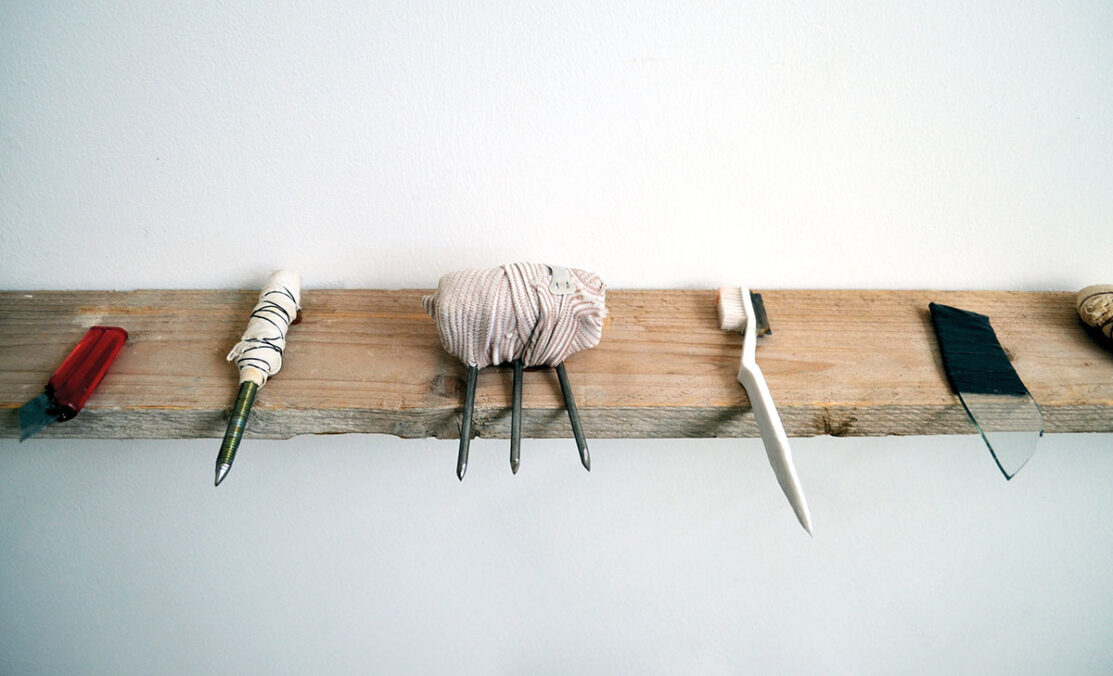
Can you share more about your artistic process and what drives you to start a new project?
My work is mostly centered around projects, so the site’s history, architecture, and cultural and current context shape its core. These elements are usually what triggers the process. It could be a corner in the gallery that I could imagine turning into a hiding spot, the venue’s name that would make me want to start a shady organization, or a political situation that would result in me establishing an absurd office. I tend to work in a pretty instinctive, ad hoc way, using materials and techniques that are drawn from whatever is immediately available. These accessible materials act as both limitations and prompts, allowing me to respond directly.
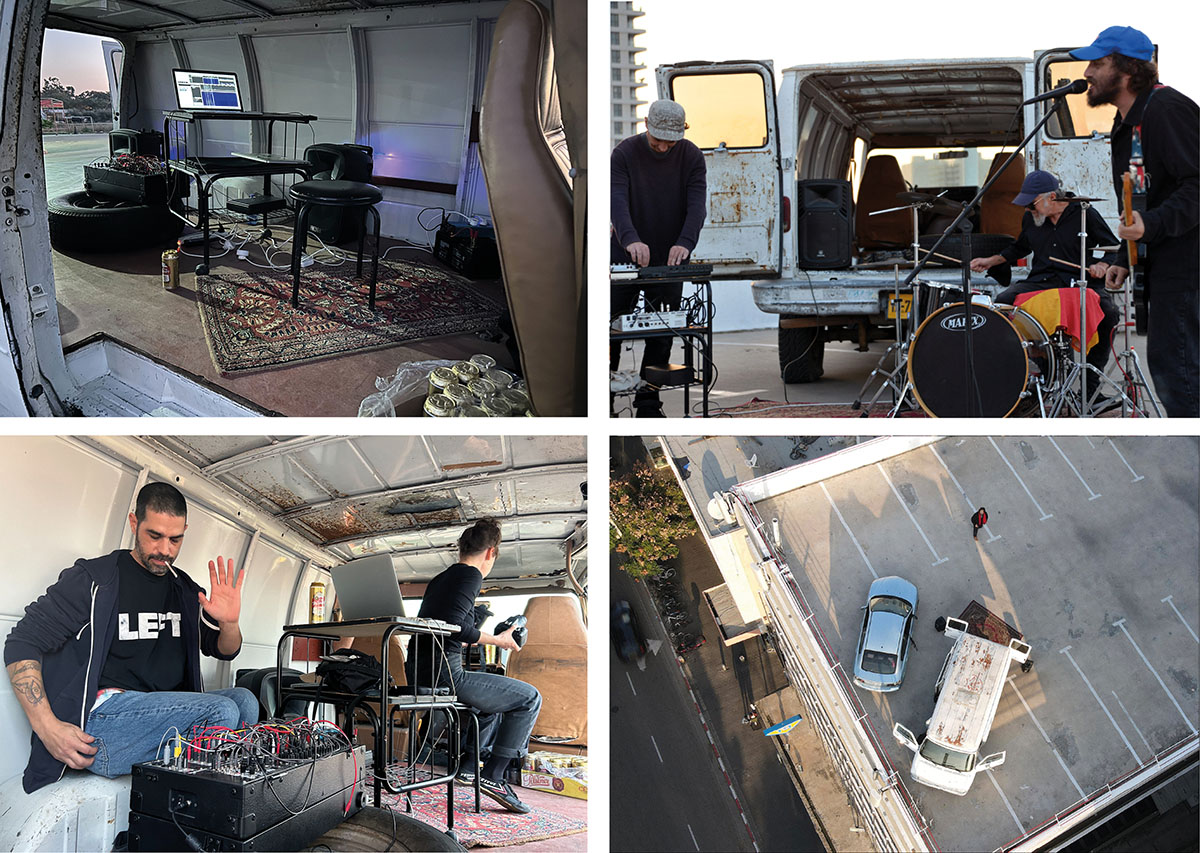
Over time, I developed a thing for spaces that have a specific function—like offices, bars, parking lots, courtrooms, and confession booths. Some have cinematic qualities, others are generic and miserable. I look at their original use and then at the potential of what they could also be—turning the mundane into the ritualistic and vice versa. It reveals a different side of them, like realizing someone you know isn’t as innocent as he seemed.
What about your recent exhibition “The Sexual and Social Psychology of the Ejection Seat”? Can you tell me a bit about it?
This project unfolds in two locations and builds a world made of raw, improvised spaces—kind of enclaves assembled from wood, plaster, murky paint, a self-sustaining DIY water system, harsh lighting, the room’s acoustics, and printed, pasted documentation materials. I worked on it together with Omer Sheizaf and Yoav Weinfeld, who helped shape the whole thing.
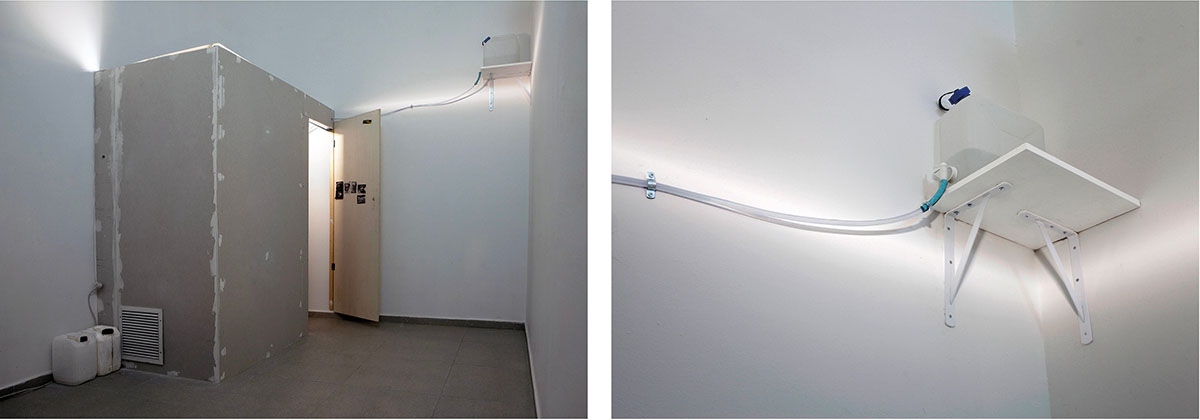
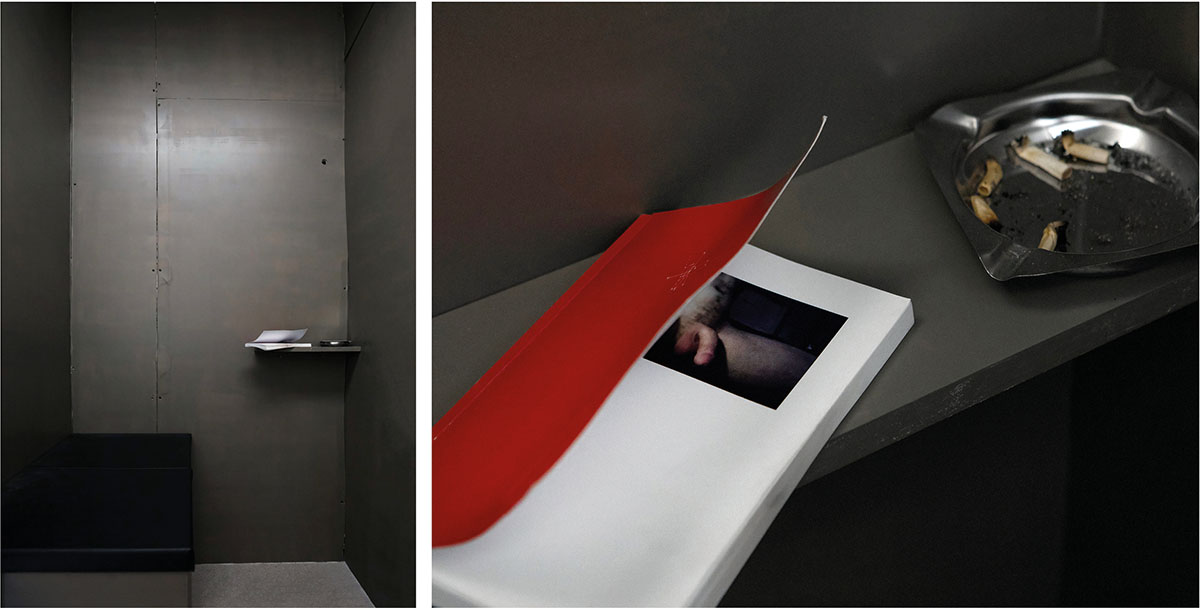
In the first part of Ta’ar Gallery, I built a small, rough space meant for a single person. It feels like a mix between an isolation cell, a confessional booth, or maybe even the backroom of a sex shop.
Inside this booth, there is a sink connected to a DIY circular water system so if you want to cleanse yourself, it will be with used water. Next to it is a worn booklet titled *Common Worship* that shows a frame-by-frame progression of a ’no hands‘ erection.
In parallel, in an underground space behind Herzl Street, there is a sound installation and a series of prints. A subwoofer emitting ultra-low frequencies uses the acoustics of the space to create a physical sensation.

The work is deliberately direct and blunt, which resonates with the present moment and the cynical, harsh state. I intended to construct a space that avoids distancing metaphors or flattering imitations of reality. The materials are raw, unpolished, without refinement or decoration. At the same time, they create a fiction. Both spaces present systems operating on internal economies—preserving the existing state, caught in loops of self-maintenance and self-satisfaction.
Lee Nevo’s solo exhibition „The Sexual and Social Psychology of the Ejection Seat“ is currently on view at Ta’ar Gallery in Aluf Batzlut Square, and an underground space at 156 Herzl Street. The exhibition, curated by Yoav Weinfeld and Omer Sheizaf, Producer Leila Rose Bari, runs through February 8, 2025.
Address and contact:
Ta’ar Gallery
Aluf Batzlut Square
www.instagram.com/taarartgallery/
Lital Megidish – www.instagram.com/litalmegidish/
Lee Nevo – www.lee-nevo.com, www.instagram.com/lee_______nevo



